#Spanish dukedom
Explore tagged Tumblr posts
Text





Pictures of their wedding.

Carlos Fitz-James Stuart and Matile de Solís (seen with her son) and heir apparent of the dukedom of Alba, wore full military regalia representing the Royal Calvert Armory of Seville for his wedding
Thank you @royal-confessions I've never heard of him before. I've heard of the Duke of Alba but knew nothing about them. A Spanish dukedom. Queen Margarita attended their wedding.

“The Fitz-James Stuart are very good-looking but wearing your ancestor’s military uniform to your wedding is kinda creepy, it’s not the same as wearing your grandpa’s morning suit. Correct me if I’m wrong but I don’t think they even served in the army so I don’t get why they chose to wear that it looks so old and worn down like it’s seen actual wars.” - Submitted by Anonymous
26 notes
·
View notes
Note
So I noticed something interesting linguistically during my Spanish lessons but then I couldn't find a reason why and thought maybe you would have an idea?
Why does the word 'German' change so much from language to language? I mean you said Deutsch but we say German. But then in Spanish, it's Alemán. That's a massive change across three language. And I know they're from different language families but it still seems like a big change, I wonder why
I mean...yeah, it's kind of a situation
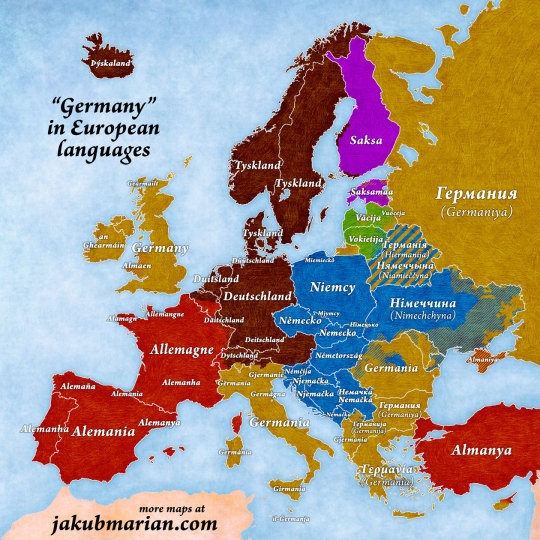
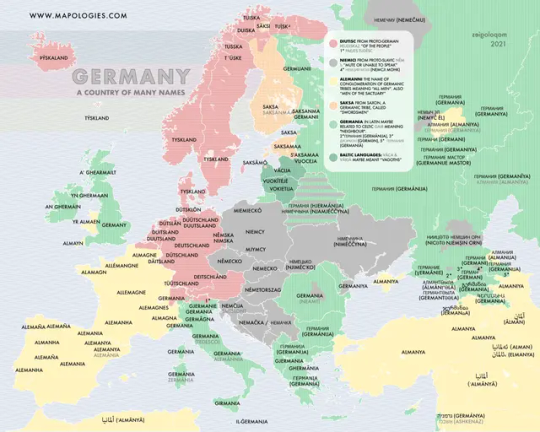

The thing is, Germany was only united as a single country in 1871. Before that, it was really a conglomerate of many different small cities, dukedoms, and kingdoms under the Holy Roman Empire (and before that: Tribes)
Modern-day Germany was just beyond the edge of civilisation during ancient times - Everything to the west and South, including France and England, was conquered and named and cartographed by the Romans but Germania was what was on the "other side":
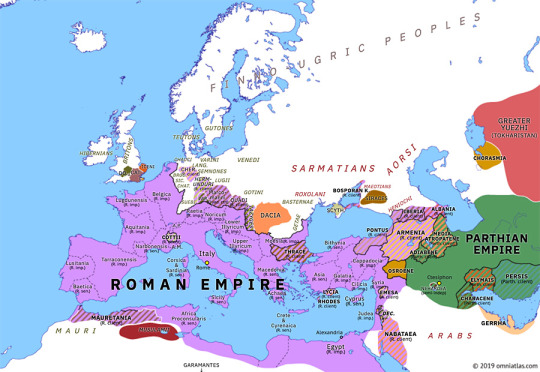

The beige part was where civilisation ended for the Romans. Everything beyond the Limes was barbarian woods and most attempts to conquer there ended in military disasters like the battle of the Teuteburger Forest so ...not much progress was being made.
The name "Germania", that was used for EVERYTHING beyond the Limes border was apparently adopted from the word the Gauls used for the peoples they knew were living right there on the other side - and which meant something like "people of the forest" or possibly "neighbours" (which means the Romans might have done that ancient thing where they asked the Gauls: "Who lives over there?" and the Gauls were "Oh, yeah, those guys are our neighbours who sometimes come to our markets and that we fight with sometimes and who talk a little weird" and the Romans were like: "Ah, so the name of everyone living in the great beyond is 'Neighbours' and just stamped that name on a large chunk of the continent full of people who had never met a Gaul and had never heard of the word "Germania")
And because that area wasn't centralised the way the former colonies of Rome were, this pattern continued - when "states" (there was no modern-day statehood then, I guess the closest word would be "Reiche" but that would be Empires in English but that also doesn't describe it accurately and Reich has a Connotation in English and kingdom suggests a kind of continuity that didn't exist yet...) interacted with the people who lived in these lands, they often falsely assumed a level of social cohesion that didn't exist. One example is when Charlemagne pushed East, he would often make deals with the pagan Saxon tribes to please stop raiding all the nice monasteries he tried to establish - but it happened again and again, and people at the time concluded that the Saxons simply didn't honour their word. The problem was, that the Saxons were not united under one ruler and were not one cohesive tribe - so just because one of them made a deal to stop raiding monasteries, this doesn't mean anyone else got the memo or felt obliged to stop plundering those monks.
Even today, this kind of happens: Like "teutonic" being used for "german" because Teutons were a German tribe or people identifying Germany with Bavaria bc they hear a lot about the Oktoberfest or "Prussian" and "German" being equated because between 1871 and 1918, the Hohenzollern, being both the royal House of Prussia and the Kaiserhaus, largely dictated Germany's foreign policy and impression to the rest of the world, and even before that posing the biggest counter-weight to the Austrian/Austro-Bavarian role on the German-speaking playing field and often symbolising the different cultures (e.g. protestant vs catholic) existing across the German-countries-minus-Switzerland.
And this is also how the name thing happened: "Deutsch" just means "of the people" and was largely used for the language (hence "Dutch", being a very similar language to German, also having that very similar name, except, since they were the "Low Countries" (flat as a pancake land) of the Holy Roman Empire, they eventually took that name for themselves and their language when they became independent - the Netherlands speaking nederlands, while Belgish dutch-speakers speak "vlaams" after the region "Flanders") But since Germany never "separated" from the Holy Roman Empire but is largely considered its successor, there was no reason to make a regional name the name for a new nation. It just remained "the nation/the people".
Over the centuries, the other countries usually took whatever name there was for the regional tribe of Deutsche/people they dealt with and applied that to the whole thing: If you dealt primarily with the Alemanni people, you would use a word like the French "Allemagne", the English lived on an island and mostly kept using the Latin name "Germania" - which became "Germany". In Finland and Estonia it's "Saksa" and "Saksamaa" because being in the East, they mostly dealt with Saxons.
This also turned into an international game of telephone eventually: People who didn't have much contact with different kinds of Europeans would just pick up whatever name the people they dealt with used for Germany. If you had a lot of contact with the French or Spanish, you would pick up a variation of "Alman", if you dealt primarily with the English or Italians, it would be a variety of "Germania"
Then you have countries like Japan, which entered international exchange very late and had a lot of contact with Dutch and German speakers - which is why they say ドイツ - "doitsu". In Mandarin it's "Déguó" - guó meaning "land" and "Dé" for Deutschland.
Then there is also the language barrier: The modern nation-states of Germany and Italy both were once part of the Holy Roman Empire and neither had a standardised language (even today, on the European continent, Germany and Italy might take the prize for the most variations of their own language on the home continent) or considered themselves "German" or "Italian" until very late. So they distinguished between the people who spoke all the variations of their own language and those people above/below the Alps who were absolutely incomprehensible to them due to speaking an entirely different language family - so the Italians also spoke of "tedesco", which is related to the word "deutsch". (Italy cleverly spared itself most of this chaos by not having a lot of neighbours to begin with).
Another language barrier issue was in the East, because that's where Germanic languages and Slavic languages meet. This meant that while everyone who was part of the German(ic) dialect family could communicate with their neighbouring towns and tribes and everyone on the Slavic side could communicate with their neighbouring towns and tribes, they were also faced with those weirdos from the other side of the language barrier who were speaking absolute gibberish (or maybe just stared at you like an idiot and said nothing when you asked them a basic question) That's why in many Slavic languages, the name for "Germany" is a variation of "Niemcy" or "Německo" - which means "mute" or "non-speaker" or "foreigner" - because those were the people they couldn't talk to. Vācija, Vokietija, and Vuoceja also work this way)

Meanwhile, in Germanic languages, it's often names that also incorporate the word "deutsch & land"- Duitsland, Tyskland, Deytshland, Däitschland, Þýskaland etc
(I think to do the language diversity and mutual communication argument some justice, I think it's also important to point out that there wasn't a lot of personal mobility for the average person at the time, so they probably also identified themselves by what little they saw of the world. If even today there are German-speakers that don't understand each other, that issue was bound to be amplified by 1000000 at a time with no standardised writing, no mobility, a thin population, small towns etc. So even if everyone between the furthest North-East of the Germanic language continuum and the lowest South-West could maybe somehow communicate with their respective neighbouring towns and tribes in pre-nation times, if you had snatched two peasants from the respective ends even of what is today Germany and sat them down on the table in the middle, there probably would have been to have even the most basic conversation or know that the other person spoke a variation of the same language - there is an old saying that "a language is a dialect with an army" - and for German, it's more "a dialect-continuum with a bunch of armies fighting each other until eventually, they got 1 army 2000 years late". Meanwhile for the educated, the lingua franca at the time was Latin.)
Now, a lot of countries ...well, eventually became countries. Which meant they could do some marketing of their own and establish their own name for themselves - but Germany, as I mentioned, was only united in 1871. Even if they considered their language "deutsch", they didn't consider themselves "deutsch" for a long time (and when they did, it was considered a radical idea) and as such, there was no centralised government saying "We are deutsch" the way the French kings said "We are French" or the English kings said "We are English" - in fact, the central authority until the early 19th century was the Holy Roman Empire. Their rulers considered themselves the successors of the old Roman Emperors - this was called the "translatio imperii" according to which Charlemagne was the first "new" Emperor" and the Empire continued until Franz II was forced to abdicate bc of Napoleon. Eventually, it was officially considered "Das heilige römische Reich deutscher Nation" - "the holy roman Empire of the german nation" - but that wasn't really a central aspect of anyone's identity.
The average person just identified by whatever colour their personal patch on this map was:

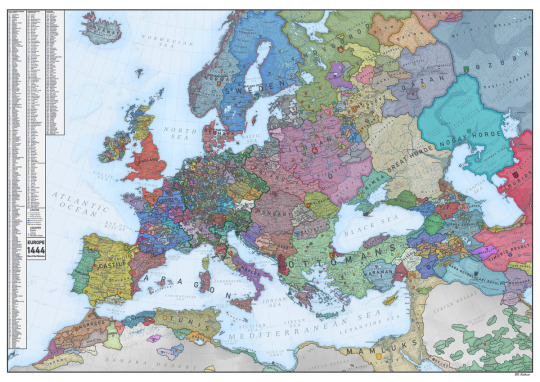
#InOurFlickenteppichEra
So no one really challenged to disagreed with someone speaking of them as "Saksa" or "German" and that's pretty much why everyone has a different name for Germany.
339 notes
·
View notes
Text
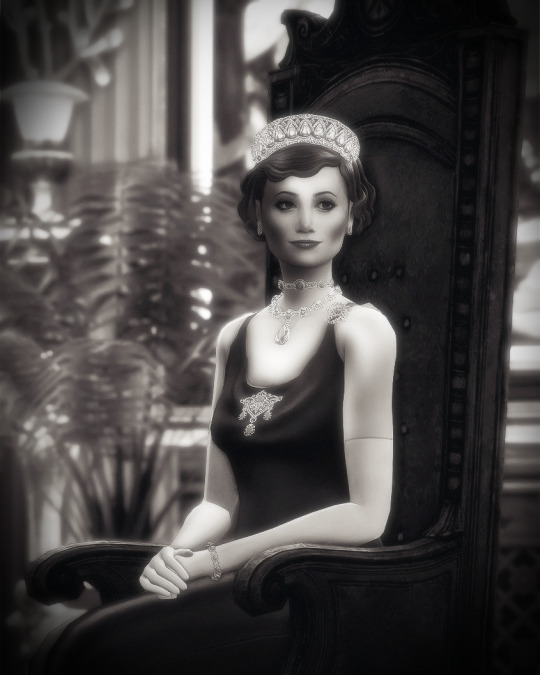
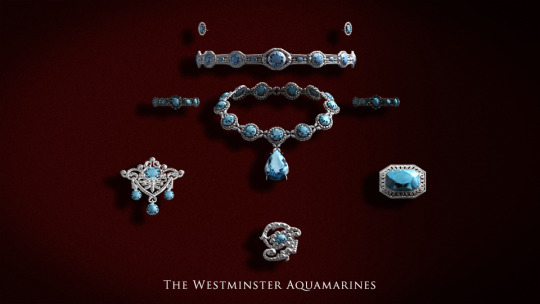
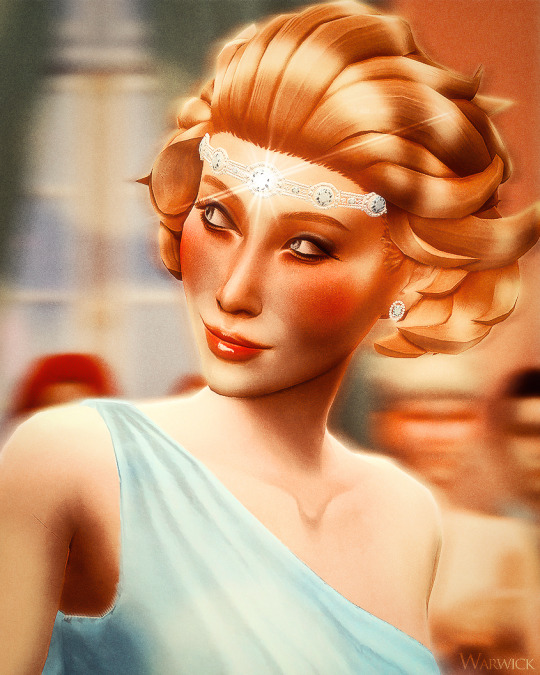

Sunderland's Royal Jewel Vault (27/∞) ♛
↬ The Westminster Aquamarines
The Sunderlandian royal family has several magnificent parures of aquamarine jewellery. One of these collections, the Westminster Aquamarines, features some of the royal family’s oldest and most iconic jewels; uncovering their history takes us back nearly two hundred years. In 1830s, Sunderland was a lone constitutional monarchy in North America, bordered by the United States in the northeast and Mexico to the southwest. The early 19th century had seen the country’s steady expansion westward thanks to territorial acquisitions from the Spanish and British. This period of territorial and economic growth, however, was cut short by the early death of Sunderland’s Hereditary Prince in 1835. Hereditary Prince Frederick James was just shy of thirty, the only son of King Louis III and his beloved first wife, Princess Amelia of the United Kingdom. Freddie was also the only legitimate male-line grandson of King Louis II, as a result, his death complicated Sunderland’s succession. The question of who would succeed Louis III ignited a fierce rivalry among the King’s younger brothers, as they scrambled to marry and produce an heir to the throne. The Duke of Lennox and St. George, the King’s first brother and heir presumptive, married an obscure German princess. The Duke of Glencairn, the King’s second brother, married the daughter of a wealthy British statesman. But it was the King’s fifth brother, Prince Augustus, the Duke of Westminster, who looked for a bride closer to home. Lady Martha Whitley was twenty years younger than her husband-to-be, a descendant of the Prussian nobility that migrated to Sunderland following the election of Prince Heinrich of Prussia as King Louis I of Sunderland, Martha hailed from one of Sunderland’s oldest aristocratic families. Unlike some of her foreign, and significantly younger, sisters-in-law Martha was shrewd and held a deep familiarity of Sunderland's court life, this was reflected in her impressive jewelry collection. On her wedding day, Martha was gifted a small box of aquamarine pendants of various shapes and sizes. As Martha’s prominence at court grew, the aquamarines became known as the Duchess of Westminster’s Aquamarines. Over the years, the Duchess incorporated the aquamarines into a few pieces of jewelry including a necklace and a pair of earrings. The tensions surrounding Sunderland’s succession died down when the British-born Prince George of Glencairn became king in 1860. By then Westminsters had three children, Prince Louis, who became Duke of Westminster following his father’s death in 1877; Prince Thomas, and Princess Elizabeth Anne. The family was popular with nobility and the public alike, but they weren’t without their scandals. After Prince Louis enraged King George by marrying without permission, his subsequent children were declared illegitimate and barred from inheritance. Finding a suitable wife for Prince Thomas, now heir to the Westminster Dukedom, became a top priority. In 1876, Prince Thomas met and fell in love with Princess Marie of Hanover, a male-line great-granddaughter of King George III and therefore a British princess. The couple married in 1880, but struggled to have children. In 1887, their only surviving child was born in the presence of Queen Alexandra. The little princess, given the lengthy name Alexandra Anne Martha Georgina Dagmar Gloriana Marie, would be known to history as Princess Anne of Westminster. Growing up, Anne was placed in the direct care of her Dear Granny Martha.
My grandmother was magnificent. She was kind but strict, with old-fashioned ideas about how a princess should be brought up. - Queen Anne of Sunderland, circa 1953
The Duchess of Westminster had high hopes for her only male-line granddaughter. Indeed, Anne’s maternal cousins were well-connected to the British and Danish royals, as well as the Imperial families of Russia and Germany. By the time Anne was twenty, she’d been taken on several trips to Europe, excursions she came to loathe. Anne’s anxiety worsened when she was rejected by several families. After her mother died in Austria, Anne returned from Europe “alone and feeling rather sorry for myself”. Back in Sunderland, Anne made friends with her second cousin once-removed, Prince George, the Duke of Woodbine and eldest son of the Prince and Princess of Danforth. Over the years, the pair’s friendship developed into a romance and in 1911, King George allowed the couple to marry. That same year, the Duchess of Westminster died, and Anne inherited the largest jewel collection in the royal vault, aquamarines included. Anne and George married in 1913. Anne, now Duchess of Woodbine, was one the most dynastically important ladies at court and she set to work reworking her grandmother’s jewels into spectacular works of art. For King George and Queen Alexandra’s 1920 Diamond Jubilee, Anne commissioned Garrard to work the aquamarines into a parure that included a necklace, a choker, two brooches, and a pair of earrings. The parure paired nicely with the aquamarine Georgiyevna Tiara, which entered the family in the early 1920s. To this day, the Georgiyevna aquamarines are often mistaken for those of the Westminster set, showing how ubiquitous they’ve become with the main-line royal family’s collection. When Anne became Queen in 1930, she wore the aquamarines. Despite her overflowing jewellery box, the aquamarines were evidently her favourite and became synonymous with her name and legacy. The Westminster aquamarines have remained iconic long after Queen Anne’s time. Queen Irene became another famous wearer of the suite, wearing the choker as both a necklace and a headband in the 1980s. Queen Anne was an important figure to Irene during the early years of her marriage, and she wears nearly all of the jewels her grandmother-in-law left to her. In the 2010s, Tatiana, then the Princess of Danforth was seen in bits and pieces of the suite, notably the choker, signalling that the jewels will be carried on into the next generation.
Queen Anne of Sunderland, wife of King George II, wears the Westminster aquamarines with the Georgiyevna tiara for a promotional image, circa 1930
Queen Irene of Sunderland, wearing a powder blue satin evening gown along with the Westminster aquamarine choker as a headband, attends a gala dinner on April 30, 1984 in Auckland, New Zealand
#warwick.jewels#✨#not a tiara technically i don't care leave me alone#ts4#ts4 story#ts4 royal#ts4 storytelling#ts4 edit#ts4 royal legacy#ts4 legacy#ts4 royalty#ts4 monarchy#ts4 screenshots
50 notes
·
View notes
Text
Sometimes you take an edible and write porn. Sometimes you take an edible, fall down a hole researching the Alhambra Decree and the War of the Spanish Succession, and actually write out the history of your Ruritarian romance novel’s fake country.
It actually fits together remarkably well, which is probably because I kept it really vague to begin with. Based on what’s in the books so far, as of the 15th century, we had two countries, Askaz (culturally very French) and Shivadlakia (culturally somewhat Slavic, also heavily Italian-influenced). Presume that they’re in a bit of a geographical “gully” so they’re not remote but they are a bit hard to get to; imagine that the Alps split, and between the two alpine ranges, you’ve got a pair of small countries that are just a pain in the ass to get to and not particularly rich in resources once there. The best way to access Shivadlakia is by boat, and the best way to get to Askaz is through Shivadlakia, which obviously creates some issues for the Askazers.
Now, in the 16th century you get the persecution of Jews really ramping up all over Europe but especially in Italy and Spain. The Alhambra Decree in 1492 starts expelling Jews from Spain, and some of them end up in Shivadlakia. These are primarily Sephardic Jews -- Georgie is descended from Sephardic Jews who arrived from Spain, for example.
Jews in Italy hear that there’s this small country quite nearby that’s taking in persecuted Jews from Spain, probably via Jewish traders who are sailing from the Shivadh port to Italy to do business. And the Shivadh, who were basically farmers until all these cool Spanish Jews showed up, are like “Well, this seems baller to me, they’re buying stuff and opening schools and they’re very quiet neighbors, let’s roll with it.”
So as of 1600, you have roughly three generations of Jews who have settled in Shivadlakia, married the locals, and started spreading into Askaz, since they’re a major trading partner. The countries are still separate, but in 1602 our hero GILLES ROMAN Y ASKAZ is born.
Round about 1625 or so, Gilles Roman y Askaz, ruler of Askaz, meets a pair of siblings, a prince and princess of Shivadlakia. He’s already been trying to figure out how to either conquer or treaty with Shivadlakia, since they have the port and he needs a port. He gets into a fight with them over a possibly-poached deer and falls in love with someone -- purportedly the princess, possibly the prince, depends on how you read it. In any case, he marries the princess and keeps the prince as a very close advisor, uniting the two countries. Sometime thereafter, he grants a dukedom to the prince, creating the Duchy of Shivadlakia, which at that point extends well into what later would become Galia. (This is Jerry’s 9x great-grandfather; one of Gilles’ children with the princess is the ancestor of Alanna and Miranda.)
All goes swimmingly until after Gilles dies; there’s a strong line of succession and the Dukes of Shivadlakia are extremely loyal to the crown. Between the royals and nobility they hold the place together remarkably well until the early 1700s, during the War of the Spanish Succession. The British weren’t super invested in this war but they were invested in stabilizing Europe, so at this point the British sent a fuckton of soldiers, mostly Welsh, into Askazer-Shivadlakia as an access point for both France and Italy. The Shivadh, who don’t have a navy and weren’t expecting a fuckton of Welsh soldiers to show up and threaten their fishing fleet, rolled their eyes and got on with making cheese, but they were forced to learn/speak English by the soldiers. The occupation wasn’t centuries long, but it was long enough for the Welsh soldiers to realize that Askazer-Shivadlakia is very like Wales only with way nicer weather and more gay, so they stayed and intermarried too, which is why everyone speaks a) English with b) a Welsh accent.
When the Shivadh finally lose patience and officially expel English rule, it’s been a short enough time that the royal family just kind of...took a breather for a generation or two, but now they’re BACK and IN CHARGE. (Sometime in here -- probably after the Welsh Invasion, but not by much -- Queen Alekha deposes the king who suborned her husband’s infidelity, beheads him, and takes the throne. She eventually marries a minor royal in order to establish legitimacy for herself.) Anyway, that’s basically how it remains until 1914, when Gregory II is crowned king.
Gregory II gets them through WWI without too much suffering, and decides -- having seen what’s going on in Russia and a couple of other key countries -- to democratize the country. He is re-crowned as the first democratically elected life-term king, and also manages to get the country through WWII, mainly by 1) sending everyone he possibly could somewhere way safer for Jews than Europe and 2) opening his country to the Allies, primarily by sheltering and supporting Allied spies and small raiding parties. This also introduces an entirely new industry to Askazer-Shivadlakia: every Allied spymaster is now aware that they are a quiet, discreet place to have A Meeting That Never Happened, and they become something of a hub for backroom diplomacy.
Gregory II passes in 1952, his son Nathan IV is elected, and Nathan is such a fucking disaster that within two years Jason Michaelis, the son of Greek immigrants to Askazer-Shivadlakia, uses his considerable wealth and political clout to oust Nathan and get himself elected. He rules until 1981, when his son Michaelis ben Jason, married to the many-greats granddaughter of Gilles Roman y Askaz, is elected.
The rest is Romance. :D
214 notes
·
View notes
Text
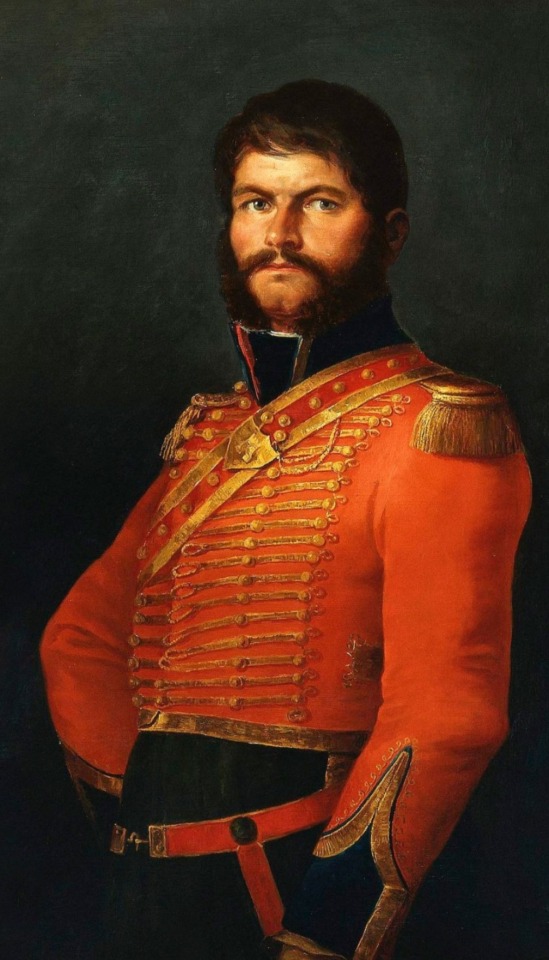
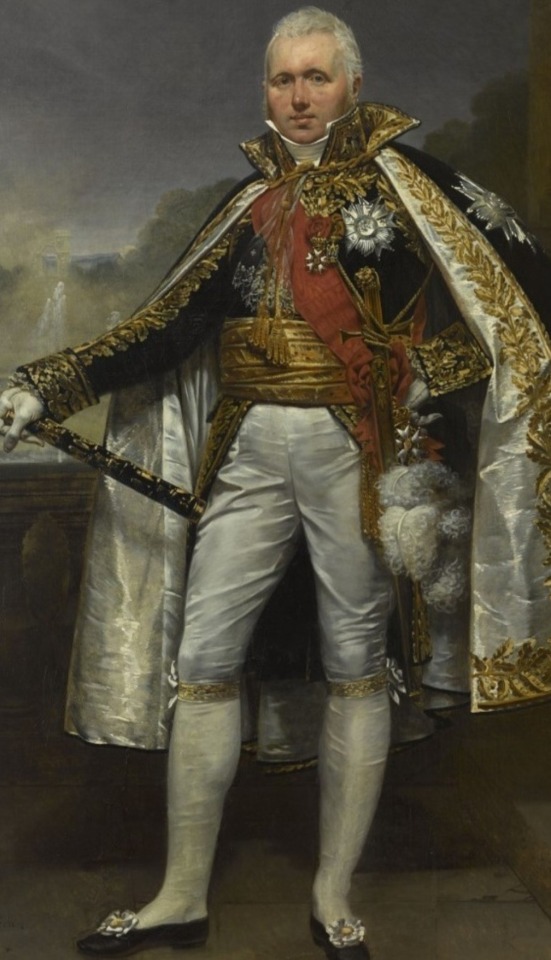
Juan Martín Díez:
Spanish leader during the Peninsular War
Propaganda:
"THE BEARD!!!”
Claude Victor Perrin:
Marshal on the other side of the Peninsular War
Propaganda:
a. “He was just a widdle drummer boy 🥁 nicknamed Beausoleil ☀️ and he pwayed the cwarinet and viowin and fwute 🥺 He was Lannes' buddy 🙌 and after years of campaigning as marshal he was rewarded the dukedom of Bellune 🌙 just so Napoweon couwd waugh at his dukedom mismatching his nickname 😂 He became so disenchanted with Napoweon that he joined a secwret society to overthrow him 🔮 but he made an oopsie-woopsie and accidentally kiwwed his son-in-waw 🗡️ which made him hate the napoweonic empire even more! 😢 So he enweashed vengeance on every Bonapartist officer 😤 and voted for his comrade Ney's death🩸but when Ney got shot on his birfday… he regwetted it for the rest of his life 😭 Anyway, he's a sad pathetic widdle man so pwease vote for him 🤭”
b. “He’s a bit more sad sopping blorbo but he’s cute in a sad sack way, he used to be all sunny with his nickname being “beau soleil” and then it was funny when he was given the dukedom of “belluno” but he was a lil mad about it, he voted for Ney to be executed after the wars and really regretted it so he has that regretful traitorous vibe”
30 notes
·
View notes
Photo
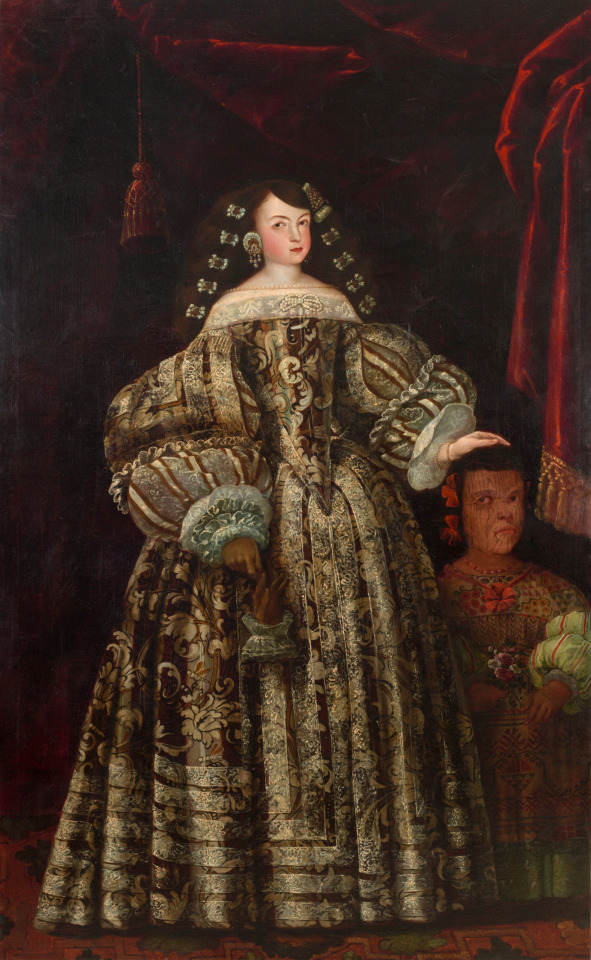
Antonio Rodríguez Beltrán, attributed (Spanish, 1636-1691) María Luisa de Toledo e indígena, 1670 Museo Nacional del Prado
Doña María Luisa de Toledo y Carreto, Marquesa de Melgar de Fernamental, was the only daughter of Don Antonio Sebastián de Toledo Molina y Salazar, II Marquis de la Mancera and Viceroy of New Spain -between 1664 and 1673-, and of his first woman, D. Leonor de Carreto. And, therefore, she was also the granddaughter of another viceroy, in this case of Peru, D. Pedro de Toledo y Leiva, who held that position between 1639 and 1648. And also, she was the sister-in-law of a third viceroy, D. Gaspar de la Cerda y Sandoval, Count of Galve, her husband's brother, who held office in New Spain between 1688 and 1696. She was a great-great-granddaughter of the first Duke of Alba de Tormes, one of the leading noble houses in Spain, and her husband was the son of the Dukes of Pastrana and the Infantado, another of the main noble families. So, in her person, María Luisa combined an entire noble inheritance linked to some of the great Spanish aristocratic families and to the main positions in the American viceroyalties. She lived part of her childhood and adolescence in the city of Mexico, where, around 1670, she must have made this portrait of her. She returned to Spain, together with her father, in 1674.
She married Joseph de Silva, linking in this way with one of the most powerful houses in the Peninsula, which held the dukedoms of Pastrana, Infantado and Lerma among many other titles, although all of them were part of the inheritance of the eldest son, for which reason None of the consorts had, at the time of the marriage, a noble title. The title enjoyed by María Luisa and her husband, Marquises of Melgar de Fernamental, was granted as a marriage dowry by the Queen herself, Mariana of Austria, in the name of King Carlos II.
The dwarf woman who accompanies her would come from the Chichimeca area, due to the tattoos that adorn her. She has been represented wearing a long and straight huipil, which is superimposed over a green skirt or dress whose lower part protrudes from the previous one. The huipil has been arranged "a la española", that is to say, it seems to be cinched at the waist and has wide added sleeves and a bottom edge with an ova-shaped lace band. The presence of this small indigenous woman was highlighting the uniqueness and exoticism, and therefore the power and prestige of her family. The color of the complexion, the tattoo and even the type of clothing that the little woman wears reveal her connection with American places and the access that the protagonist of the canvas exhibited in relation to some networks of circulation of transoceanic goods and products. New Spain (modern day Mexico) came to be called Mexico in 1821, after the Mexican War of Independence. The viceroyalty was dissolved and the Mexican Empire was established.
#european history#european art#spanish art#spanish history#new spain#spain#spanish#female portrait#world history#the americas#america#americas#indigenous#art#historical art#mexico#west indies#history of mexico#oil painting#1600s#royal#royaly#noble#nobility#María Luisa de Toledo e indígena#María Luisa de Toledo#indigena#indigenos#north america
62 notes
·
View notes
Text
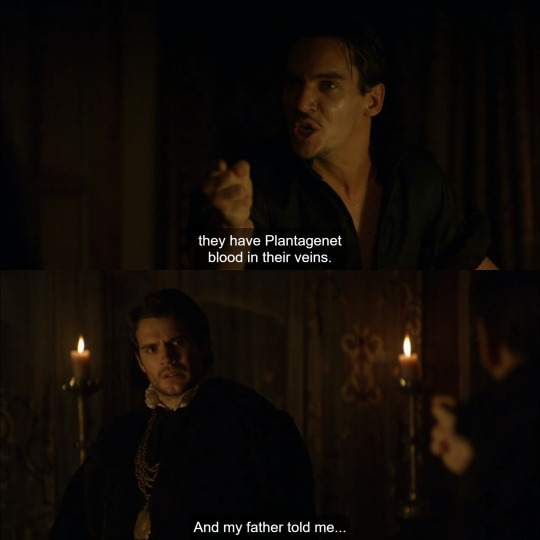


Thomas Stafford was the ninth child and second surviving son of Henry Stafford, 1st Baron Stafford and Ursula Pole. Little is known of his early life, first being mentioned in 1550 as he travelled to Rome, where he associated with his uncle Reginald Cardinal Pole. He spent three years in Italy before travelling to Poland, obtaining the recommendation of King Sigismund Augustus who requested Mary restore him to the Dukedom of Buckingham. Augustus's appeal appeared to have no effect. When Stafford returned to England in January 1554 he joined the rebellion led by Thomas Wyatt; this arose out of concern of Mary's determination to marry Philip II of Spain. The rebellion failed and Thomas was captured and briefly imprisoned in the Fleet Prison before fleeing to France. There, he intrigued with other English exiles and continued to promote his claim to the English throne. On 18 April 1557 (Easter Sunday) Stafford sailed from Dieppe with two ships and over 30 men. Landing in Scarborough on 25 April 1557, he walked into the unprotected castle and proclaimed himself Protector of the Realm,[2] attempting to incite a new revolt by denouncing the Spanish marriage, railed against increased Spanish influence and promised to return the crown "to the trewe Inglyshe bloude of our owne naterall countrye".[1][3][4] Stafford claimed he had seen letters at Dieppe showing that Scarborough and 12 other castles would be given to Philip II and garrisoned with 12,000 Spanish soldiers before his coronation.[5] Three days later, the Earl of Westmorland recaptured the castle and arrested Stafford and his companions. Stafford was beheaded for treason on 28 May 1557 on Tower Hill, after imprisonment in the Tower of London. Thirty-two of his followers were also executed after the rebellion.[6].
#rlly showcasing hcavill's 'acting' here...anyways. let me mind my business#i need the tudors to be less underrated than it is bcus like. the way i totally buy this was a rant he totally gave...#'they have plantagenet blood in their veins' (so do you; babygirl) and all#bcs like. he is truly the worst. but is he wrong?#thomas stafford like my grandfather was right! the tudors suck dhfagrfwragfm#honestly the reason being given as her marriage to felipe ii was probably just a pretense#also yes this is all from wiki. don't judge me .#for all the faults of the writing (and it had plenty) it really like...took you to that emotional place#of this is the worst man in the world but also. he's sort of right. and just lets you sit#in the discomfort of that...#and also that this is all his self-fulfilling prophecy to some extent. reginald pole wrote that indictment of him#but he didn't have it widely published until he. yk. killed his entire fucking family bar geoffrey#(and then this does happen to edward courtenany to some extent too. altho it seems he was more pawned than complicit)#marian#henrician#i actually didn't know about this rebellion ...really contradicts that narrative#that all mary's plantagent relatives 'adored' her; huh?
10 notes
·
View notes
Text



Duke Nuno II 'the Impaler' of Portucale finally died at age 70 after drinking himself to death. This leaves his one and only son, Duke Mendo IV Nunez of Portucale who is Fernando's brother-in-law, inheritor of his dukedom. Unfortunately, Duke Mendo has been struck with cancer and his health is declining. Fernando's eldest sister, Infanta Blanca Alfonsez of Leon has been promoted and is now Duchess to Duke Mendo. Fernando promptly sent an alliance negotiation to Duke Mendo after his promotion.

Infanta Gotruda Fernandez of Leon who is Fernando's beautiful second daughter gained the trait Curious at age 3, and this meant Fernando educating his daughter as his ward in the ways of diplomacy.




Finally, we managed to research finish "Royal Prerogative" for the Castilian culture, unlocking the High Crown Authority necessary for the Unite the Spanish Thrones decision. We take the decision and Fernando is henceforth known as King Fernando II 'the Father of Spain' of Leon.

An overview of the world in 1103.
0 notes
Text
.
#I just finished watching the cook of castaway#a 1700s drama set in a Spanish dukedom#so I went back to watching what I had started before#the crowned clown a Korean drama set in Hanyang Joseon pre Korea#and I gotta say the whiplash between the two#the only thing that’s the same is they love people above/below their station#edit I just realized that autocorrected to castaway#it’s castamar#the cook of castamar
1 note
·
View note
Note
Wait sorry I don’t follow the Spanish royals outside of letizia and the girls…could you do a recap of the drama? I know Christina is a relative but who are the other guys?
Cristina is JC's and Sofia's middle child and Felipe's sister. Iñaki is her husband. Pablo is their second son. Just to make a recap of the people that has been mentioned ;)
Cristina and Iñaki married in 1997. He was a handball player and they were an instant hit with the public. Their wedding was THE wedding and they were the hot couple. They had 4 kids: Juan, Pablo (this is the one who talked with the press today), Miguel and Irene. They were popular as a couple and they were popular individually. IMO; they were the only ones whose popularity was at JC and Sofia's level.
Everything was going well until they moved to Washington. Not much later, Iñaki started being investigated for corruption. Both of them ended up having to go to Court and Felipe took away her dukedom. He ended up going to jail and he has been out since last year (I think?).
Now, word is, and it's something that has been discussed today, that his ex girlfriend found out about his engagement with Cristina over the tv. They were going to marry and word is that they had already booked the masía. During the investigation that sent him to jail, mails were discovered that seemed to point in the direction that he was being unfaithful and, today, the media is even talking about some russian models. This wasn’t widely known and was kept pretty hush hush by the press.
They do not live together. She still lives in Geneva and he lives in Spain (he can't leave). She was here during the holidays, and if I understood correctly, these pics were taken the day after she left. Apparently, they all knew yesterday that the pics were going to be published today. I hope this helped!
P.S: he is being exposed now because there are pictures that a magazine has published.
11 notes
·
View notes
Text
Family. That's what it inevitably comes down. Certainly, the Wright's valued power and wealth. But never at the expense of family. His lips quirk into an upward smile; Janey and Robert. The next generation of Wright's. Would they inherit their parents' bloodlust? "No, you gave us Janey. All he did was last a few nimble minutes in your bed and take credit for your good work." What was his Dukedom before Constance's sharp mind? "You did what any good mother would do." The way she did it could be divisive, but neither ever spoke of moral high ground. Tapping his quill, he rolls through the options. They are not without options. The question is how and when. "Unfortunately, he serves the Spanish. You know how they feel about us." Almost as horribly as the Scottish. "In theory, it would be easier to finish this back home. Without the lots of nobles watching our every move. But if Meredith can help it, no harm will befall him." And though they were never entangled romantically, he does care for Meredith. She is family, in her own way. "I do not wish to hurt her, but I fear her devotion to him is irrevocable."

The Wright siblings were more open with each other than most siblings and definitely more honest with each other than anyone else. Constance sometimes wondered if that was part of why she had never been able to connect with her husband, aside from his immeasurable cruelty, she trusted no one but her brothers and what is love without trust. Nor did she deserve trust, so it seemed. She had told her brothers her intent and Beckett had told her how best to make it look like an accident. If anyone doubted her, Alistair had smoothed all over, making it look far more likely that Henry's own brother was the suspect, not she. It had all gone according to plan, when the three worked together it always did. "And he gave us our Janey." For all that she had disliked her husband, her daughter was the light of her world. "I know you feel the same about Robert as I do about her, whether he's physically yours or not. Zehab is not his father. What does he know of Robert? He has not witnessed any of his milestones. It is only selfishness that brings him back. He is selfish above all, but he does not scare easily. We could plant false information on him? Make him look as if he is a traitor to his new land? Then they would kill him for us and our hands would be clean as far as anyone would know."

6 notes
·
View notes
Text
TND AU Headcanon: Nuriel Uno

Affiliation(s): Uno clan, Royal English Knights
Occupation(s): Captain (former), Grand Duke, First Patriarch of Uno Clan
Nuriel Uno was born of Spanish-British descent, spent his childhood being discriminated as "half-breed". However, as he entered the training as knight, he befriended young princess Elizabeth. To prove himself worthy, he was sent with his troops to defeat pirates that kidnap children and women into slavery. Rescuing them, he become a captain of knights. Afterwards, he brought victory from territorial wars and supported Elizabeth I through her ascension to English Throne. He gained the noble title of Grand Duke, possessed his own land and castle where he ruled his own grand dukedom with fair laws.
Nowadays, he was held with great regards for he accepted foreign slaves as his people. And not many people know that Nigel Uno was his descendant. When Sector V entered the old Uno Castle in England, they were surprised to see how Nuriel and Nigel looked alike. Should the Uno Clan still thrived, Nigel would have been considered form noble family nowadays.
#TND#TND AU#KND#KND AU#Headcanon that Uno clan was has a root of noble blood#Nuriel Uno#Nigel's ancestor
20 notes
·
View notes
Text
( oscar isaac, cis man, he/him, forty-five) ** ♔ announcing GABRIEL CAVENDISH-YZNAGA, the DUKE OF DEVONSHIRE ! in a recent portrait they seem to resemble OSCAR ISAAC. it is a miracle that HE/HIM survived the last five years, considering they are CONFIDENT, GALLANT, and HEDONISTIC. i hope the plague has not changed them. they are FOR working together with the other kingdoms

BASIC INFORMATION
BIRTH NAME: Gabriel Augustus Julian Cavendish-Yznaga
AGE: Forty-five
DATE OF BIRTH: July 26,
PLACE OF BIRTH: Derbyshire, England
GENDER: Cis Man
PRONOUNS: He/him
LANGUAGES: English, Spanish, French, German
BACKGROUND
** THIS IS A MESS OMG IM SO SORRY
First born of George Cavendish and Catalina Yznaga. His father came from a prestigious family while his mother had been raised in Cuba before moving to Spain. Her father used to be a very important Spanish-Cuban royal advisor.
While Gabriel grew up with some of the usual responsibilities of being a noble, he had a relatively normal childhood. From a young age, he discovered his passion for horseback riding and fencing. He was a rather active child who drove his mother crazy.
It’s not a secret that he was his mother’s favorite son, while his father preferred his younger brother Robert. Catalina could hardly deny anything to her son whom she considered too smart for being a simple duke. She was also who introduced him to art and music, something his father disliked as he believed his son should occupy his time preparing to inherit the dukedom.
His relationship with his father was always a tense one. They were polar opposites and the duke struggled to understand Gabriel’s more artistic and sensible side.
By the time he turned 18, he was betrothed to the daughter of an Austrian duke. The engagement didn’t last long as his fiancée passed away after a short illness.
For some years, he managed to escape his father’s attempts to pair him up but he couldn’t escape from it forever and by the time he was 25 his engagement to a French countess was announced.
Gabriel and his wife have been married for 25 years and they’ve had a civil marriage. He cares for her but he doesn’t love her.
With her, he was three children. The oldest being 24 and the youngest being 12.
death tw: Becoming a Duke was never part of his plans and he had hoped that his brother Robert could take the title as he knew he was a better fit for the dukedom but when Robert tragically died in the war, he was the only option left.
death tw: After Robert’s death, his father’s health collapsed. It was not a secret that George preferred his youngest son and his death devastated him even to the point he told Gabriel he would have rather that he had died instead of Robert.
death tw: After a short illness, his father passed away and he inherited the title.
From the outside, Gabriel seems the perfect family man and he is or at least he tries but for the past few years he’s been having an affair with Genevieve Bourbon.
PERSONALITY
Gabriel has always been sort of a rebel. He goes against the constraints nobility has tried to impose him and now that he has the title and he owes nothing to anyone, he tries to do as he pleases.
He’s extremely good-hearted. If hippies were a thing around that time, he certainly would have been one.
Not afraid to show his emotions or to stand up for himself or others.
5 notes
·
View notes
Note
Hey, I'm writing a fantasy story where the nobility is based on the French/Spanish systems. My character is a noble Duke and his brothers inherited Dukedom although they control some Counties given as generous titles. Were noble Dukes ever related to members of the royalty, like the Princes, Princesses, ect through 3rd or 4th cousin relation?
Sometimes though distantly.
5 notes
·
View notes
Text
SEX AND THE COUNTRY HOUSE: ADULTERY IN THE EDWARDIAN ERA
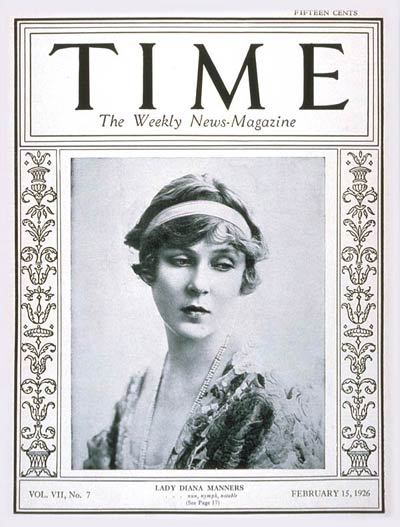
We tend to imagine the Edwardian period in the pastel colours of a Downton Abbey set: white gloves, cricket, young ladies who have the haziest notions of how heirs are made.
While the highborn ladies in question were still on the marriage market, they would have done well to give no one a reason to suspect otherwise about this last part. Violet Manners, the Duchess of Rutland, went so far as to forbid her daughter Diana to hold hands with any young man not her brother (not that it prevented Diana from going on boat excursions with Oxford students when living with her less strait-laced relatives). However, once the wedding bells rang out – more often than not after a match of convenience rather than romance, although not exclusively – the rules of the game changed.
For a beautiful married woman in the Upper Ten Thousand, as the crust of the richest and most influential families in Britain was dubbed, to have a lover was almost always tolerated – provided, of course, all proprieties were observed.
It was whispered often and loudly, for instance, that the Duchess of Rutland’s two daughters, Diana and Letty, were in fact conceived not by her husband, but by two different lovers. Nonetheless, the girls were officially recognized as the Duke’s children, and nothing threatened their inheritance during their lifetime. Admittedly, the fact that they were indeed girls, and thus unable to inherit the dukedom itself, must have helped.
This web of relationship could be surprisingly amicable: Diana herself later affectionately wrote in her memoirs about the way her father’s mistress, a great American actress Maxine Elliot, introduced her to the world of theatre. During the First World War, the Duchess even asked Maxine to help persuade the Duke to turn their house on Arlington Street into a hospital for wounded officers. Maxine agreed.
Many extramarital liaisons were ignited during country house parties. These Saturday-to-Mondays (no one called them weekends for the fear of being mistaken for the kind of people who have workdays) had scores of men and women gather in their friends’ country houses for several days of shooting, cocktails, and bridge. A good hostess knew her guests well – and that included the sacred knowledge of who is sleeping with who. This information ruled what Vita Sackville-West later delicately termed ‘the disposition of bedrooms’. As she wrote in her novel, The Edwardians,
‘…the name of each guest would be neatly written on a card slipped into a tiny brass frame on the bedroom door … Lord Robert Gore was in the Red Silk Room; Mrs Levison just across the passage. That was as it should be’.
The world of fashion assisted these pastimes as much as any private effort could. The French designer Paul Poiret’s creations took Edwardian England by storm for more reason than one. Their use of brassiere instead of a traditional corset made clothes more comfortable for the wearer, of course; however, it was also much easier to take off or to put on again in the case of an emergency, if someone was to almost discover the lovers. Paul Poiret himself seemed to understand his target audience well: he noted once that ‘undressing a [corseted] woman is an undertaking similar to the capture of a fortress’.

Of course, both the woman and the one who was doing the undressing had to exercise caution regardless of what they were wearing: poor Lady Londonderry’s story is a good example of that. She had a misfortune to get onto the bad side of Gladys, Marchioness of Ripon, a patron of the opera and a woman of fearsome elegance. When the latter discovered love letters from Lady Londonderry in the house of her lover, Harry Cust, she pinched the correspondence in question without many qualms. Reading it later, she realized with delight that, apart from being shockingly indiscreet, the letters also contained a multitude of disparaging remarks about Lady Londonderry’s own lawful husband. Another person might have thought publication or even blackmail – however, Gladys had a longer game in mind. Besides, Lady Londonderry had nothing she might have wanted – apart, of course, from their common lover.
During her next meeting with her friends over a game of bridge, beneath the warm glow of a silken lamp, Gladys dramatically produced a packet of letters and offered to give a little dramatic reading, since the game came to a standstill anyway. Exchanging bewildered looks, her guests agreed. Whatever it was, it couldn’t have been boring – not coming from Gladys, who made everyone else appear dull and, according to the contemporary writer E.F. Benson, ‘a shade shabby’. The result didn’t disappoint: she read the steamy lines with hilariously exaggerated passion, and had her friends in stitches.
The ‘private readings’ continued for several months, until the last instalment was finished. Then Gladys had the letters delivered to Londonderry House in Park Lane. The bundle, tidily tied with a ribbon, was given to Lord Londonderry. The revelation didn’t lead to divorce – after all, such a thing would have been not so much prohibitively expensive as prohibitively scandalous. The relationship between the couple has cooled somewhat, though.

If this frankly tabloid-like story could be placed on the more salacious end of the Edwardian adultery scale, then the opposite, respectable one, was firmly occupied by Mrs. Keppel. This lovely woman with creamy skin and chestnut hair became one of the last representatives of the fading tradition of royal mistresses, despite being firmly married. She had been the sole companion of the Prince of Wales, a.k.a. future Edward VII, a.k.a. Bertie, from 1898 and until his death. When their relationship began, he was fifty-eight and she twenty-nine. There were other drawbacks apart from this rather obvious one: Bertie also had an impressive girth – probably stemming from his habit to eat five meals a day and have a whole cake served at tea instead of the traditional light sandwiches and scones – and a past that included a lot of French dancing girls.
However, this liaison – although such a frivolous word is scarcely suitable for the position that lasted for years, and established Mrs. Keppel as the uncrowned queen of the high society – had its upsides. Admittedly, most of them were monetary. Whatever Bertie spent on her out of his yearly income of £470,000, his financier Sir Ernest Cassel helped her to multiply. When Mrs. Keppel had just met the Prince of Wales, her lifestyle could be described as, at most, respectable. When he died twelve years later, she had shares in the Argentine Great Western railway, the Cordoba Central, the Royal Mail Steam Packet Company, the Transvaal Diamond Mining Company, and others; she travelled by a private train and was a beloved guest at the casinos at Biarritz and Monte Carlo. Despite this long affair and its very visible dividends, Mrs. Keppel managed to avoid greasy whispers and attentions of ill-wishers – mostly by retaining an aura of the utmost propriety. ‘She knew’, said Consuelo Vanderbilt later, ‘how to choose her friends with shrewd appraisal’.
Friends, perhaps; but what about her husband? Well, his private thoughts on the matter remained unknown. What is known, however, is that he vacated the marital bedroom obediently when confronted with the royal desire for his wife. Perhaps, he shared her views that extramarital affairs could be a sound business practice rather than a diversion it was for Lady Londonderry and the others. Mrs. Keppel had once tried to impress this opinion on the young Clementine Churchill. During a Spanish holiday in 1914, she advised Clementine to help her husband’s political career by finding herself a powerful lover. She was dismayed by Clementine’s refusal, and opined that it to be, if anything, selfish.
It must be noted that few extramarital romances among the Upper Ten Thousand featured such disparity of power and wealth as Mrs. Keppel’s did. Indeed, when they did, quite often the sponsorship, financial and political, went in the other direction. This tendency did not remain in the Edwardian age – a generation later, Oswald Mosley derived quite a part of his funding for his young fascist party from his mistresses’ money. However, that is a tale of another time, and for another time.
Sources:
Diana Cooper, A Rainbow Comes and Goes.
Juliet Nicholson, The Perfect Summer: England 1911, Just Before the Storm.
Diana Souhami, Mrs Keppel and Her Daughter.
#writing reference#writing ref#writing help#writing resources#edwardian#edwardian era#edwardian age#1910s#1900s#british history#history#downton abbey#writeblr#writing community
7 notes
·
View notes
Text
Fitzroy's investiture must have delighted his mother Bessie, whose husband Gilbert Tailboys attended the ceremony, but it also represented a significant blow to Queen Catherine. Fitzroy's quiet childhood may have enabled her to maintain a dignified denial about his existence, but this public event, and all that it entailed, made the boy a main figure at court from that point onwards, when he was given his own establishment at Durham House, her former home. A private letter written by the Venetian ambassador, described the event [...] [and had] noticed it had been the cause of some tension between [the King and Queen]: 'The Queen resents the earldom and dukedom conferred on the King's natural son and remains dissatisfied, at the instigation, it is said, of three of her Spanish ladies, her chief counsellors, so the King has dismissed them [from] the court, a strong measure, but the Queen was obliged to submit and have patience.'
The Six Wives & Many Mistresses of Henry VIII (Licence, Amy)
11 notes
·
View notes